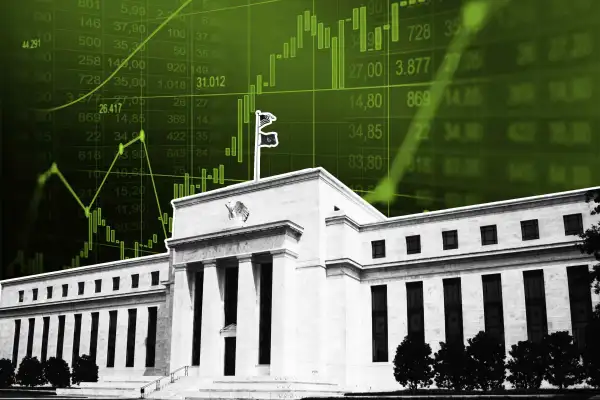The Fed May Slow Down Its Rate Hikes, But Investors Shouldn’t Celebrate Yet
Money is not a client of any investment adviser featured on this page. The information provided on this page is for educational purposes only and is not intended as investment advice. Money does not offer advisory services.

The Federal Reserve raised its benchmark interest rate by another 0.75% Wednesday and signaled that hikes could be smaller moving forward. A policy shift could be good news for the stock market, but investors shouldn’t expect a major change anytime soon.
The latest rate hike brings the Fed’s benchmark federal funds rate to a target range of between 3.75% and 4%.
The central bank said in a news release it would take “the cumulative tightening of monetary policy, the lags with which monetary policy affects economic activity and inflation, and economic and financial developments” into account when determining the pace of future rate increases.
Experts interpreted that clause to mean that the central bank is prepared to slow down interest rate hikes depending on how the economy is doing. The Fed also acknowledged the fact that its policy changes take a little while to impact the economy.
That was welcome news for investors that were eagerly awaiting some relief after the sixth hike in the span of a year and the fourth consecutive hike this large. But it does suggest the Fed still plans to keep raising rates.
What does the latest rate hike mean for the stock market?
Stocks shot up on Wednesday afternoon immediately following the news but tumbled as investors took in the Fed’s still-tough stance on inflation. High interest rates make borrowing and doing business more expensive for companies, which can weigh on their stock prices.
“This strikes us as a clear signal that [the] wave of 75bp hikes is over,” Pantheon Macroeconomics chief economist Ian Shepherdson wrote in a note to clients about the Fed’s comments, “unless the data between now and the December meeting…are unexpectedly awful.”
But don’t expect major changes just yet. Many experts are predicting another 50 basis point hike in December, followed by another smaller hike in 2023 and then a period of steadily high rates.
These major interest rate hikes are intended to slow the rate of inflation, which has been running at its highest level in 40 years, and keep the economy from overheating. Right now, consumer prices are still rising (albeit at a slightly slower rate than they were a few months ago). Prices were 8.2% higher in September than they were a year earlier, according to data from the Bureau of Labor Statistics.
“If you’re expecting a rate cut anytime soon, I wouldn’t hold your breath,” eToro’s U.S. investment analyst Callie Cox said in written commentary shared with Money, adding that “rates could stay high for a while.”
Federal Reserve Chairman Jerome Powell said as much in a press conference on Wednesday afternoon: “It is very premature to think about pausing,” he told reporters.
“We continue to believe that the Fed will stay ‘higher for longer,’” Gargi Chaudhuri, Head of iShares Investment Strategy, Americas said in written commentary, adding that economic growth will slow down.
Luckily, a high-rate environment and a sluggish economy isn’t necessarily bad for investors. It’s a good time to evaluate your investment mix, for instance, and make sure your portfolio matches your risk tolerance. You can also keep your eye out for good buying opportunities, but remember: This isn’t the time to make major changes to your long-term investment plan.
More from Money:
Why Stocks Are Bouncing Back Despite Fears a Recession Is Coming
Why You Should Own International Stocks, Even Though They’re Lagging the U.S. Market


